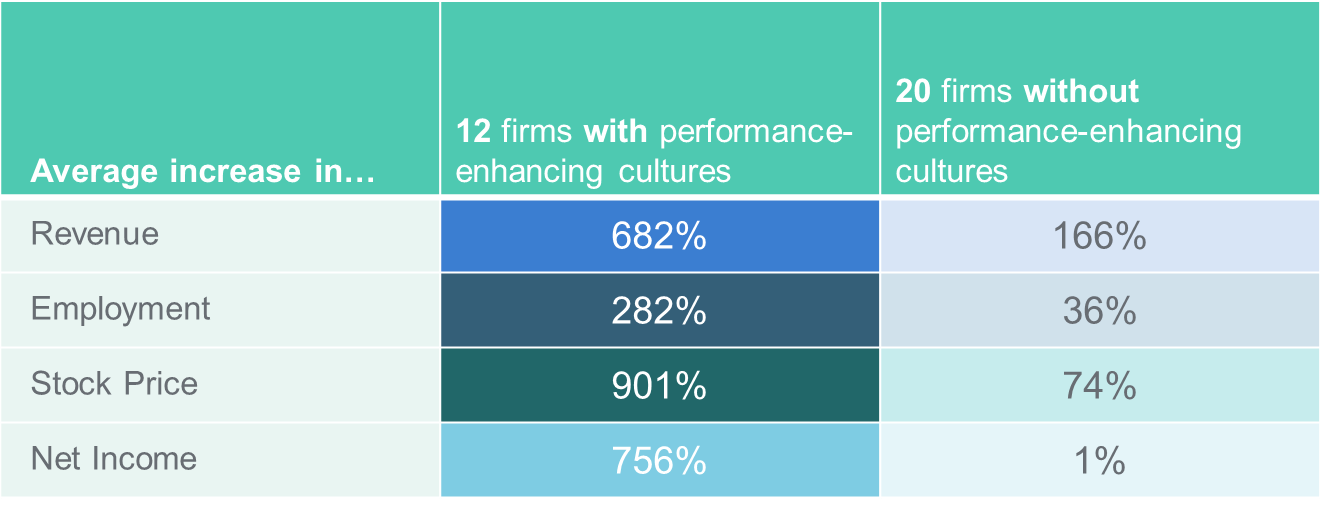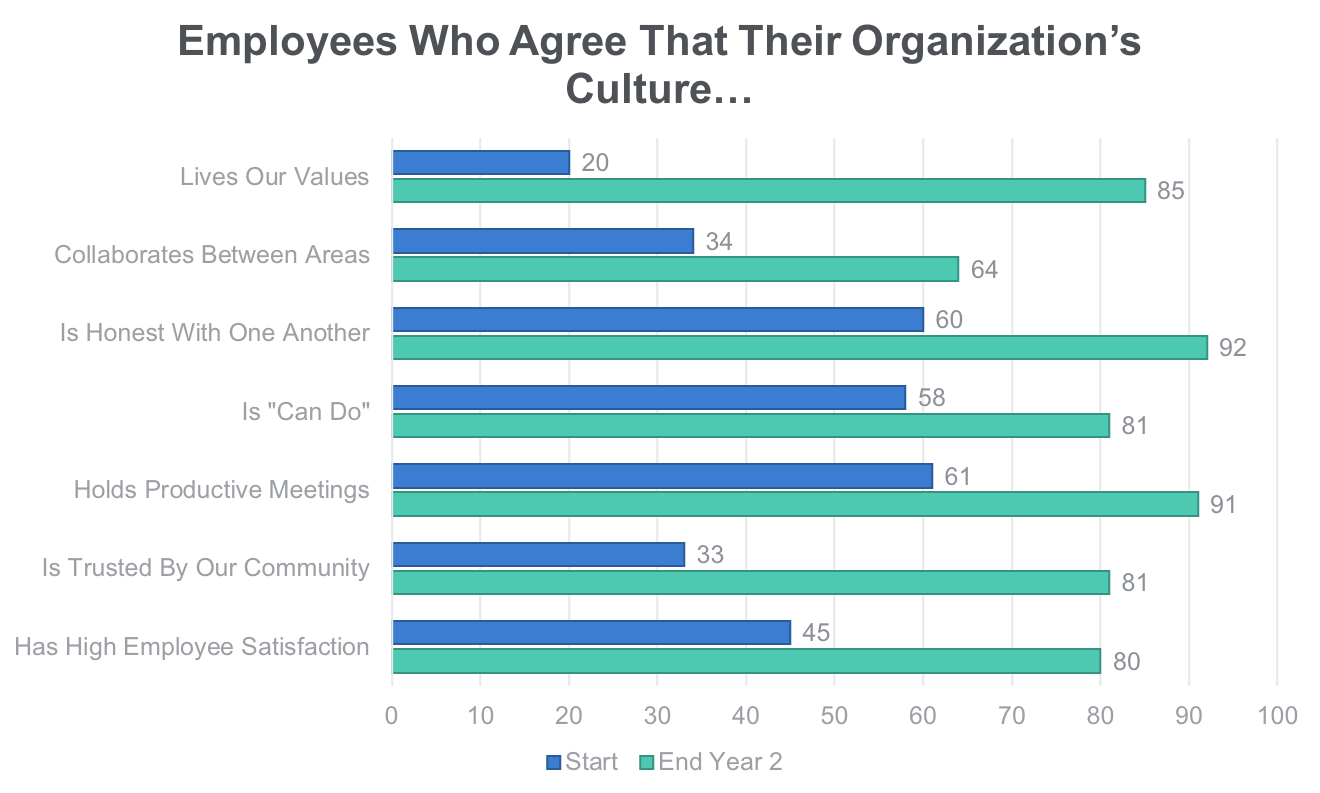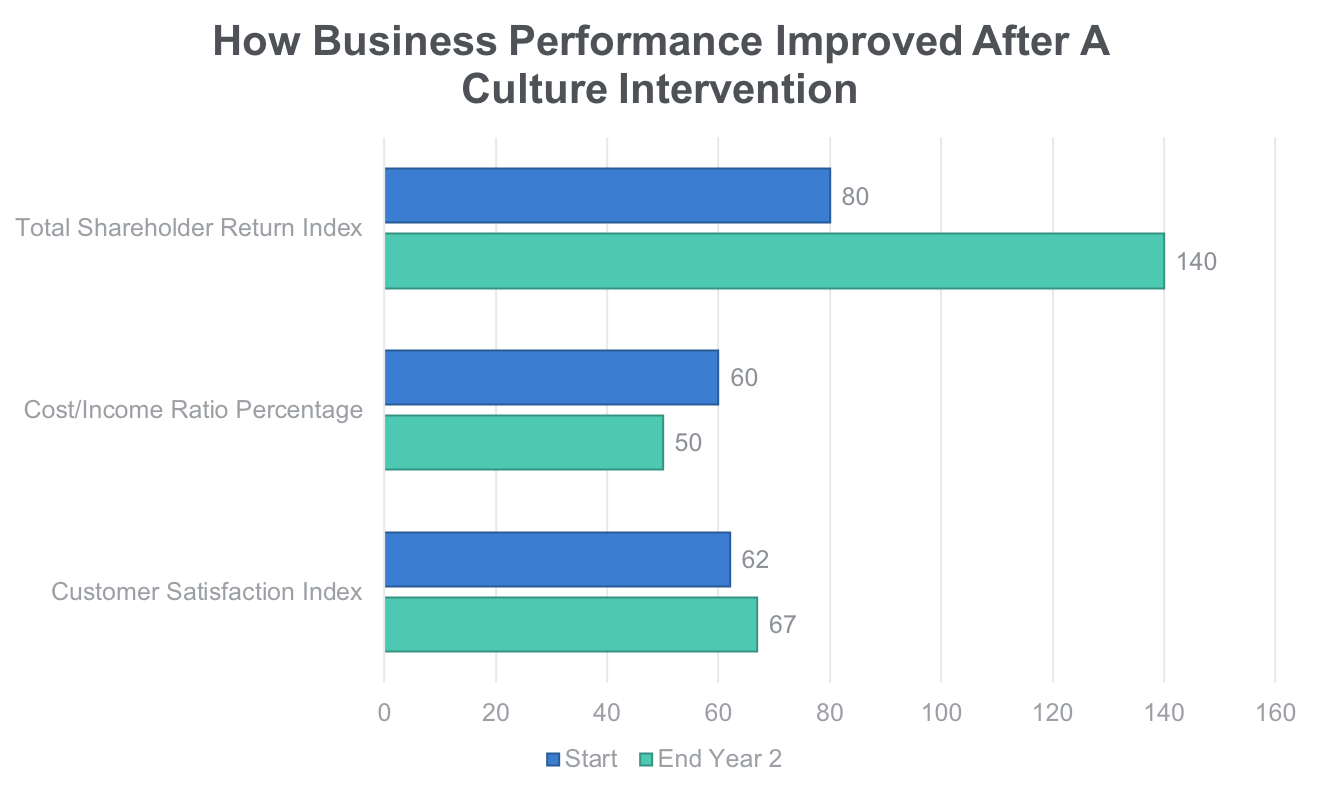
Corporate boards tend to focus their meetings on “the hard stuff:” compliance, budgets, risk management, financing, CEO succession planning. Not surprisingly, putting company culture onto the board’s agenda can be difficult. Boards may feel that it is not their responsibility or that it is something that should be addressed at the C-suite level. Board members may believe that they needn’t concern themselves with employees’ mindsets and behaviors. They may feel that it doesn’t really matter (unless, of course, something goes wrong).
The problem? Research has shown that corporate culture is directly linked to financial performance. Consider the following data from John P. Kotter and James L. Heskett’s Corporate Culture and Performance:

A positive and open culture leads to lower employee turnover and a better work ethic. It also attracts higher quality applicants and drives productivity and innovation. But the obverse is also true: McKinsey recognized several years ago that 70% of their recommendations weren’t being implemented due to corporate cultural barriers.
We know that boards are responsible for ensuring that there is a sound strategy in place, that CEO succession is being addressed, and that the company’s performance is safeguarded. If culture is so tightly tied to performance, then culture ought to be very high on a board’s list of issues to address.
What do we mean by corporate culture?
Carol Faull, the culture practice leader of my consulting firm, L&C Strategic Advisory, defines culture simply: it’s “the way we do things around here.” Culture drives everything from how emails are handled to reward and recognition practices and whether an organization tolerates lax safety standards. Organizational culture is different from employee engagement, which measures how individuals are feeling about their work. A good way to distinguish these concepts is to think about the Titanic on the eve of its sinking, April 13th, 1912. I am sure that engagement was very high that evening: the champagne was flowing, the music and food were spectacular, and people felt coddled. But in the early hours of the 14th, when there weren’t enough lifeboats to save everyone, the passengers were victims of a culture that didn’t value the safety standards that I referred to above.
While culture is often thought of as an intangible, it can be measured. The tool we use at L&C is the Barrett Values Assessment. The online tool, which can be completed by everyone at every level in the organization, measures the gap between how individuals would like to see organizational values expressed and the current reality. Results can be broken down by function and level to identify where gaps—referred to as organizational entropy—are more serious.
When the online assessment results are coupled with intensive, one-on-one interviews with a broad range of leaders, and focus groups with front line managers and personnel, deep insights arise: it is possible to pinpoint what types of responses and actions executive leadership needs to drive to shift “how business is getting done.” Addressing organizational entropy in a disciplined and open manner can lead to enormous shifts in a company’s culture and directly enhance performance.
Here are the results of one recent culture diagnostic and transformation we helped a client complete:

… and the corresponding business outcomes:

This exercise can also help board members understand why the company may be succeeding (or not) in achieving its goals.
Putting corporate culture on the agenda
When boards put Culture on the agenda, the topic might sit within a balance scorecard discussion or become part of the HR Committee’s deliberations. No matter where it sits, however, the board must recognize that culture is the responsibility of the CEO and her team: culture starts at the top. The board ought to ask the CEO for concrete measures of the organization’s cultural health and insist that they have opportunities to meet with staff in informal settings. These situations facilitate the process of gaining a better understanding of the general atmosphere at the company—whether people are readily able to accomplish their work, the degree to which they are aware of and aligned with the strategy, whether they feel valued by their bosses and colleagues, etc.
Putting culture on the board’s agenda is becoming increasingly important, and boards are beginning to understand that it is an area that should be measured, monitored, and addressed at their level—not just left to the VP of HR. It is, perhaps, THE bottom line issue.
Get the Skills You Need
Thousands of independent consultants, subject matter experts, project managers, and interim executives are ready to help address your biggest business opportunities.
About the Author
More Content by Mary Larson




















